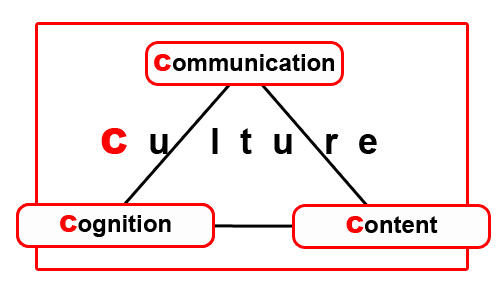Bilinguales Lernen
Wählen Sie eine Sprache für diese Seite: Deutsch I Englisch
In vielen Ländern gehören bilinguale Lehr- und Lernangebote zunehmend zum Schulalltag - so auch in Deutschland. Organisationsformen wie bilinguale Züge, jahrgangsweise erteilter bilingualer Sachfachunterricht oder flexible bilinguale Module bieten Lernenden die Möglichkeit, sich fremdsprachig mit Sachfachgegenständen auseinanderzusetzen. Dabei können Umfang sowie Methodik des Einsatzes einer Fremdsprache beträchtlich variieren.
In Deutschland hat insbesondere der Unterricht in bilingualen Zügen eine lange Tradition. In diesen bewältigen Lernende ein Sachfach bzw. auch mehrere Sachfächer fast durchgängig in einer Fremdsprache. Die Anzahl der Schulen mit bilingualem Zug ist dabei in den Bundesländern relativ stabil. Der Bericht des Schulausschusses an das Sekretariat der Ständigen Konferenz der Kultusminister der Länder (KMK) mit dem Titel "Konzepte für den bilingualen Unterricht - Erfahrungsbericht und Vorschläge zur Weiterentwicklung" weist im Jahr 2006 für Deutschland insgesamt 630 Schulen mit bilingualem Zug aus.
Neben den etablierten bilingualen Zügen haben in den letzten Jahren flexible bilinguale Module an Bedeutung gewonnen. In bilingualen Modulen werden Sachfachinhalte unter Einbeziehung einer Fremdsprache unterrichtet. Dabei variiert der Anteil fremdsprachiger und muttersprachiger Sequenzen in Abhängigkeit von den Rahmenbedingungen. Die Fremdsprache ist nicht explizit Gegenstand des Lernens, sondern Kommunikationsmittel bzw. Arbeitssprache. Im Vordergrund stehen sachfachliche Inhalte. Zudem zeichnen sich bilinguale Module durch eine Vielfalt von Methoden aus, die sowohl aus dem Sachfach- als auch dem Fremdsprachenunterricht kommen.
International wird zunehmend der Terminus CLIL (Content and Language Integrated Learning) verwendet, der die Verschmelzung von Inhalts- und Sprachenlernen bezeichnet. Eine wichtige Grundlage des Konzeptes von CLIL ist das sogenannte 4 Cs Framework (1) nach Do Coyle, welches den Zusammenhang zwischen den vier CLIL-Dimensionen Inhalt, Kommunikation, Kognition und Kultur verdeutlicht (siehe Grafik).

In CLIL eignen sich Lernende über die fremdsprachige Interaktion
- sachfachliche,
- fächerübergreifende,
- methodische,
- kognitive,
- kommunikative und
- interkulturelle Kompetenzen
an. Sie erweitern ihren allgemeinsprachlichen und sachfachspezifischen Wortschatz. Darüber hinaus werden durch das Anbahnen des Denkens und Handelns in zwei verschiedenen Sprachen die kognitiven Kompetenzen des Lernenden gestärkt. Da über die fremdsprachige Auseinandersetzung mit Sachfachinhalten stets ein Blickwinkel auf die eigene als auch fremde Kultur eröffnet wird, geht der Kompetenzerwerb einher mit einer Entwicklung interkultureller Kompetenz.
Eine terminologisch exakte Unterscheidung der Konzepte CLIL und bilinguales Lehren und Lernen gestaltet sich beim gegenwärtigen Stand der Forschung schwierig - CLIL wird häufig als Oberbegriff für variantenreiche Ausprägungen des Lehrens und Lernens unter Einbezug einer Fremdsprache verwendet.
Organisationsformen bilingualen Lernens in Thüringen
In Thüringen kann bilingualer Sachfachunterricht in zwei Organisationsformen angeboten werden:
1. Bilinguale Züge an Gymnasien
- Unterricht unter Verwendung einer Fremdsprache in einem oder mehreren Sachfächern auf der Basis eines speziellen Lehrplanes bzw. spezieller Lehrpläne
- Ablegen einer bilingualen Abiturprüfung im bilingual unterrichteten Sachfach
2. Bilinguale Module an allen weiterführenden Schulen
- inhaltlich und zeitlich begrenzter Unterricht unter Verwendung der Fremdsprache in einem Fach oder mehreren Fächern
- Nachweis auf dem Zeugnis
Auf den nachfolgenden Seiten des Thüringer Schulportals finden Sie Antworten auf diese Fragen:
- Wie wird bilingualer Sachfachunterricht in Thüringen durchgeführt?
- Welche Schulen in Thüringen haben bilinguale Züge?
- Welche Schulen können in Thüringen bilinguale Module anbieten?
- Wer kann bilingual unterrichten?
- Welche Fächer werden bilingual unterrichtet?
- Welche Materialien stehen für den bilingualen Sachfachunterricht zur Verfügung?
- Welche Unterstützungsangebote gibt es in Thüringen?
(1) Do Coyle, Philipp Hood, David Marsh: CLIL Content and Language Integrated Learning, Cambridge University Press 2010, S. 41






 +49 36458 56-279
+49 36458 56-279 +49 36458 56-300 bilinguale Züge
+49 36458 56-300 bilinguale Züge +49 36458 56-347
+49 36458 56-347 +49 36458 56-300
+49 36458 56-300